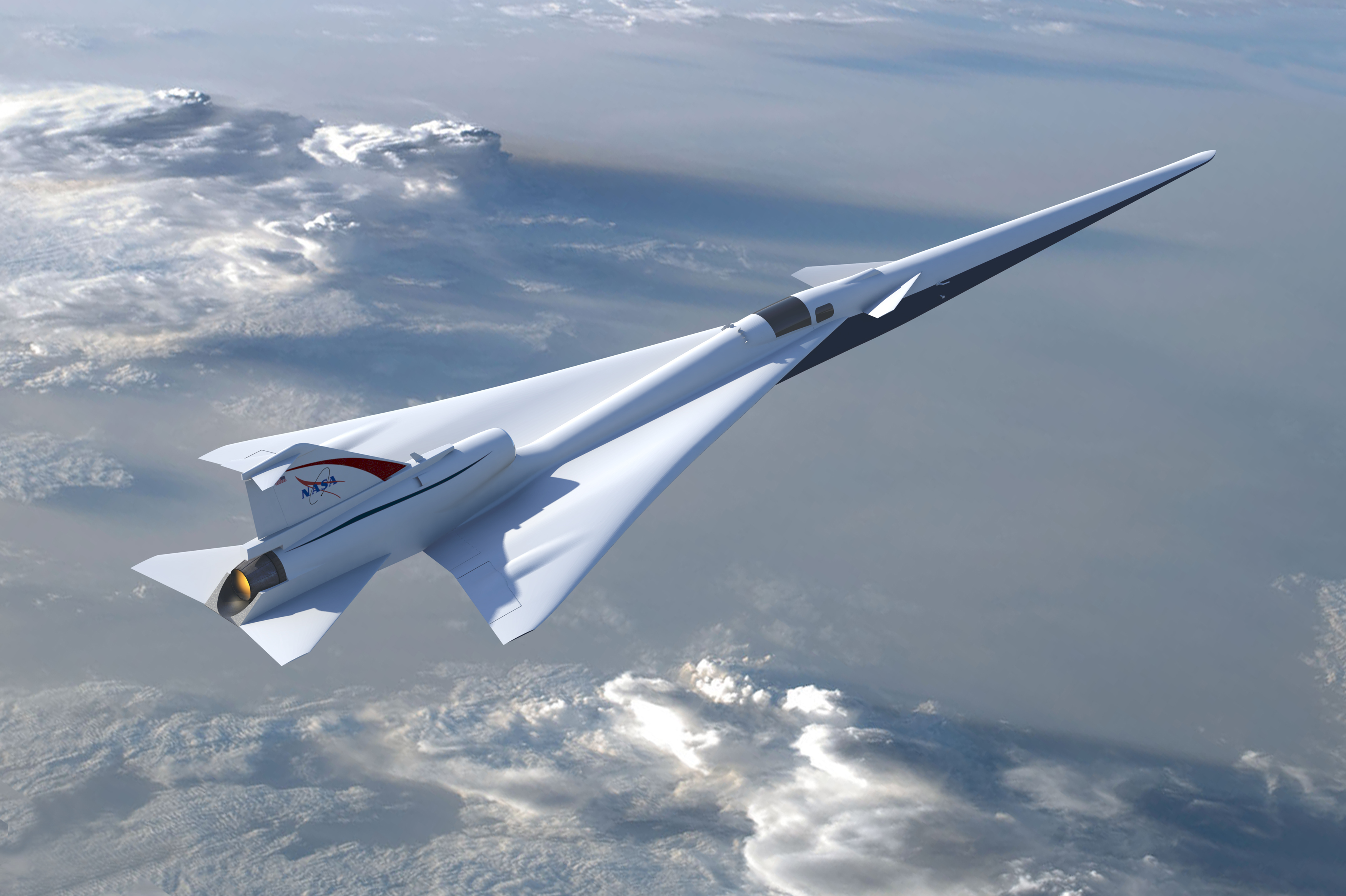NASA's new X-59 supersonic plane gets powerful engine for quiet sonic booms
The supersonic X-59 plane is designed to fly Mach 1.4 with quieter booms, NASA says.

NASA's supersonic plane is now one step closer to its flight demonstration over U.S. communities.
The X-59 supersonic plane of NASA's Quesst mission just got its 13-foot-long engine, according to a recent announcement from the space agency. This crucial piece of hardware will deliver 22,000 pounds of thrust and fire up the X-59 to fly faster than the speed of sound. NASA hopes the data collected during flight, sometime around 2025, will prove that its new supersonic technology will produce just a "thump" as heard by people on the ground, and not a sonic boom. This will then be brought to regulators to change rules about how fast a plane can be allowed to fly over land, and perhaps get used on future applications of commercial aircraft to reduce travel times, according to NASA.
The engine comes from General Electric Aviation, a subsidiary of General Electric. According to a Nov. 14 update from NASA, the engine will deliver X-59 to speeds up to Mach 1.4 and altitudes around 55,000 feet (16,764 meters).
In photos: NASA's amazing X-planes from the X-1 to XV-15
"Through Quesst, NASA plans to demonstrate that the X-59 can fly faster than sound without generating the loud sonic booms supersonic aircraft typically produce. This thunderous sound is the reason the U.S. and other governments banned most supersonic flight over land," NASA officials wrote in a mission description back in May.

But Quesst is still just in its first phase, focused on assembly. Engine installation happened at Lockheed Martin’s Skunk Works facility in Palmdale, California in early November.
"The engine installation is the culmination of years of design and planning by the NASA, Lockheed Martin, and General Electric Aviation teams," Ray Castner, NASA’s propulsion performance lead for the X-59, states in the November update. "I am both impressed with and proud of this combined team that’s spent the past few months developing the key procedures, which allowed for a smooth installation."
Get the Space.com Newsletter
Breaking space news, the latest updates on rocket launches, skywatching events and more!
The Quesst mission will end in 2027, when the data collected from the flights across yet-to-be-announced U.S. communities is brought to regulators in the U.S. and internationally, according to NASA.
"With the information gathered during the Quesst mission," space agency officials wrote in May, "the hope is to enable regulators to consider rules based on how loud an aircraft is, not based on an arbitrary speed."
Follow Doris Elin Urrutia on Twitter @salazar_elin. Follow us on Twitter @Spacedotcom or on Facebook.
Join our Space Forums to keep talking space on the latest missions, night sky and more! And if you have a news tip, correction or comment, let us know at: community@space.com.

Doris is a science journalist and Space.com contributor. She received a B.A. in Sociology and Communications at Fordham University in New York City. Her first work was published in collaboration with London Mining Network, where her love of science writing was born. Her passion for astronomy started as a kid when she helped her sister build a model solar system in the Bronx. She got her first shot at astronomy writing as a Space.com editorial intern and continues to write about all things cosmic for the website. Doris has also written about microscopic plant life for Scientific American’s website and about whale calls for their print magazine. She has also written about ancient humans for Inverse, with stories ranging from how to recreate Pompeii’s cuisine to how to map the Polynesian expansion through genomics. She currently shares her home with two rabbits. Follow her on twitter at @salazar_elin.









